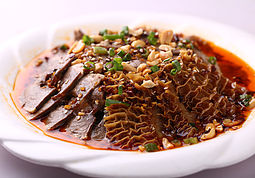
Chengdu
Living Here
Chengdu is a great city to live in, we found it easy to get around by bus and the new train system will be better again. To lived near the American consulate, there is an area around a few blocks away where most expats live, though the apartment was almost all locals. The local markets were great with food. The food in general though was very hot and very oily, and not typical Chinese fare.

Cost of living in Chengdu
From clothes to food, buying things that are produced more locally could actually turn out to be quite a bargain. If you’re at a fabric or farmers market, it’s also common to haggle for lower prices.
If you’re used to brand-name goods however, be prepared to pay high import taxes. You may also be hard pressed to find reasonable prices when it comes to items like avocados and cherries, which seem to be more rare in China.

Accommodation Cost

Buildings in Shanghai generally expand vertically rather than horizontally. However, there are a variety of housing types to choose from and you should be able to find something to your liking.
Transportation
Train
As the largest railway hub in southwest China, the city has convenient railway transportation. At present, it has three railway stations for passenger transport: Main Railway Station, namely North Railway station, East Railway Station, and South Railway Station. Another passenger railway station, west railway station is now under construction. When completed, the “two principals (north and east railway stations), two assistants (south and west railway stations)” setup of the city’s rail transport will be formed and better service passengers.
Subway
With the opening of subway line 1 in September, 2010, Chengdu subway system commenced the rail transit history in western China. Line 2 started to operate on 16th September, 2012, and all stations had been opened by 26th October, 2014. Line 4 connects Wannianchang and Intangible Cultural Heritage Park and contains 16 stations.

City Bus
Public bus services extend in all directions. You can get to most of places, especially sights inside the city, by bus. Common public buses charge CNY 1, while those with air-conditioners charge CNY 2. Take small change as there are no conductors on many of the buses.
Taxi
Hundreds of taxi stands are available in the city. Except hailing a taxi at a stand, it is also feasible to take one along the street. To shuttle around by cab, you’d better avoid the rush hours between 07:30 – 09:00 & 17:00 – 19:00. In addition, it shall be quite normal that a driver doesn’t use the taximeter if the car departs from railway stations or long-distance bus stations. In this case, it is recommended to discuss for a flat rate before getting on the car. For difrerent brands of cars, the fare varies a little
Long-Distance Bus
This city has several main coach stations transfering passengers within or outside Sichuan Province, including General Bus Station (Wugui Bridge Bus Station), Xinnanmen Bus Station (Tourism Bus Center), Chadianzi Bus Station, Airport Bus Station, East Railway Station Bus Station, Beimen (North Gate) Bus Station, and Wukuaishi Bus Station.

Food
Shanghai cuisine, also known as Hu cuisine, is a popular style of Chinese food. In a narrow sense, Shanghai cuisine refers only to what is traditionally called Benbang cuisine (Chinese: 本帮菜; pinyin: Běnbāng cài; literally: “local cuisine”) which originated in Shanghai; in a broad sense, it refers to complex and developed styles of cooking under profound influence of those of the surrounding provinces, Jiangsu and Zhejiang. It takes “color, aroma and taste” as its elements like other Chinese regional cuisines, and emphasizes in particular the use of seasonings, the quality of raw materials and original flavors.

Bean curd with mince and chili oil
Ma Po Tofu (Bean curd with mince and chili oil): one of the most influential flavors of Sichuan cuisine, served in every Sichuan restaurant. Chen Ma Po’s Bean Curd Restaurant at No. 197, West Yulong Street serves the most delicious and local one. For hundreds of years, Ma Po’s Bean Curd has been popular among people all over China, even throughout the world.

Hotpot
When people think of Chengdu, they immediately think of hotpot. Introduced from Chongqing, Chengdu hotpot has its own style ranging from simple spicy to moderate, three or four kinds of spices, as well as fish head hotpot, medical herbs hotpot, etc.

Fu Qi Fei Pian
Fuqi feipian ( “sliced lung by the married couple”) is a popular Sichuan dish, served cold or at room temperature, which is made of thinly sliced beef and beef offal. Common ingredients in the modern version include beef heart, tongue and tripe, and a generous amount of various spices, including Szechuan peppercorns. True to its Sichuan roots, the desired taste should be both spicy and mouth-numbing. Despite its name, actual lung is rarely used.






